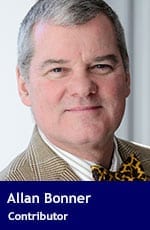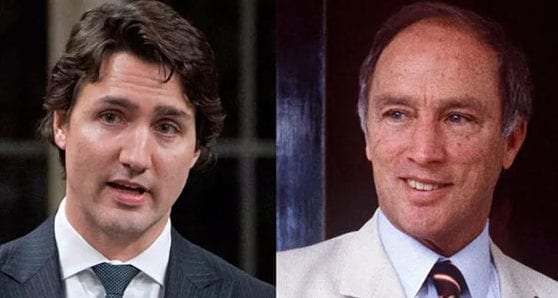 A charismatic leader with most of the bloom off the rose near the end of his first mandate. An ordinary leader, elected from a province with the fraction of the population of a major city.
A charismatic leader with most of the bloom off the rose near the end of his first mandate. An ordinary leader, elected from a province with the fraction of the population of a major city.
The current Canadian federal election?
Yes, but also the contest in 1972 – the first I covered as a young broadcaster in campus radio. We stayed on the air until the early hours and signed off not quite sure who would be prime minister.
One seat went independent and another to a Rhinoceros protest party candidate. Either of these or some other close seats could have changed the governing party. In the end, it was Pierre Trudeau returning as prime minister, with Robert Stanfield beginning his tenure as the best prime minister we never had. The final count in the 234-seat House of Commons was 109 for the Liberals to 107 for the Conservatives, 31 to the New Democrats and 15 to the Social Credit (all in Quebec).
The result was a minority government.
There are more similarities.
Pierre Trudeau replaced respected Nobel Prize winner Lester Pearson as Liberal leader in 1968. Justin Trudeau replaced not as distinguished predecessors but certainly egg-heads – Bob Rae, Michael Ignatieff and Stephane Dion.
Justin is equally as bicultural as Pierre, with more experience outside of Quebec. But Pierre was more at home in both languages.
The differences, however, are striking and may influence the outcome of this election.
Pierre’s charisma was partly earned. He was well-educated, athletic and had travelled the world at a time when many Canadians hadn’t seen their own country.
But the charisma was partly a fluke, too. He was surfing the tsunami caused by the youthquake of the late 1960s. Canada was euphoric because of Expo ’67 and smaller Centennial year celebrations across the country, the Le Dain Commission on the non-medical use of marijuana, and the Royal Commission on Bilingualism and Biculturalism. There were liberation movements – women, blacks, sex and self-determination movements in the Indigenous communities and regions. As the Supremes sang, it was a “happening.”
Justin didn’t have a wave. He was refreshing after 10 years of Stephen Harper’s Conservative government, but that’s just a little warm water in the cold shower, not a wave.
Oddly, Pierre presented as youthful in his late 40s. Almost equally oddly, Justin was considered youthful at just a little younger than his father. Pierre and Justin make younger leaders (Joe Clark and Andrew Scheer) look like old fogies in comparison.
I have a window on why the bloom fell off Pierre’s rose. His first mandate, for which I was too young to vote, apparently turned Ottawa elites into an ineffective graduate school common room, and a magnet for screwball ideas and people. I met and worked with several of the most famous years later, and they were still larger than life and so were their budgets. In short, the economy, the FLQ October Crisis, and mainly the revelation that deep thinking didn’t produce concrete policy or action did Pierre in.
But there the comparison with Justin falls short. Pierre was actually given lots of credit for overreacting to the FLQ kidnappings in Quebec. So there was no smoking gun.
Justin has real scandals to act as headwinds. He self-identified as a feminist and appointed women to half his cabinet posts – worthy actions. But then he caused women to protest after alienating two female cabinet ministers, one of whom is Indigenous. The alienation was a result of what many say was law-breaking in trying to influence his attorney general, Jody Wilson-Raybould.
Handling of the national inquiry into missing and murdered Indigenous women and girls, promised apologies to Indigenous groups, and slow-motion reconciliation and recognition gave all these stories legs.
Pierre Trudeau’s favouring integration, as in the black liberation movement in the U.S., put him on the wrong side of Indigenous issues. But this wasn’t on the general electorate’s radar.
Pierre was on the wrong side women’s issues, too. After his sexuality was questioned, he challenged men to leave him alone for 20 minutes with their wives and noted they wouldn’t like the outcome. This would sink a modern campaign but was just pugnacious Pierre, back in the day.
In fact, he was literally pugnacious. I was at the Vancouver dinner in which he went out to speak to protesters, punched one in the nose, came back in, borrowed some of my cutlery and dined in apparent serenity. The prime minister was charged with common assault and got off.
Justin is also known for a beguiling demeanour. But he brushed off allegations of inappropriate advances years ago by simply claiming not to remember, not by being appalled that a feminist might have made a mistake.
Resignations by cabinet ministers came later in Pierre’s career – John Turner was the quiet poster-man for disenchantment with the boss. Justin’s ministers, Jane Philpott and Wilson-Raybould, are not quiet but they are poster-women.
Both Justin and Pierre could be described as loners.
Pierre famously admonished Jean Chretien for making a comment about the weather when the prime minister specifically told Chretien he didn’t want to be disturbed during a trip they took together.
“It’s raining out there,” Chretien said.
“It would be out there,” Trudeau snidely retorted.
But Pierre had close colleagues in cabinet – Jean Marchand, Gerard Pelletier and later Marc Lalonde.
Justin is not known for liking meetings at all. Pierre may not have liked them but he did have them – 90 intense seconds or so at a time.
As for the Opposition leader, Stanfield is one of the few people awarded the Right Honourable honorific without holding the appropriate office. He looked dull but was a scholar, graduate of Dalhousie University and Harvard Law School, where he was the first Canadian editor of the Harvard Law Review. As a four-term premier of Nova Scotia, he accomplished much, including drawing valuable foreign investment and creating the first version of medicare.
Scheer’s political career is as an MP and Speaker of the House of Commons – arguably more credentials than Justin had when he became prime minister. He was first elected in 2004 at 25 years of age and has a bachelor of arts degree. He looks bemused, or even happy, regardless of the occasion.
Stanfield famously fumbled a football on the tarmac in North Bay. A single photo of the incident may have cost him the election.
Scheer hasn’t fumbled anything but is not much better of a performer on video than Stanfield, and in public life 45 years later, that’s unforgivable.
The big change since 1972 is the volume and intensity of opposition research.
In this campaign, a less than ringing endorsement of same-sex marriage from Scheer in 2005 has been unearthed — similar to statements many of his Liberal critics have made.
Out will come more allegations of impropriety by Justin Trudeau.
Out will come allegations of Scheer’s hidden agenda – perhaps the same one Harper is said to have had but which never emerged.
If Stanfield won a couple more seats, my guess is Pierre would have quit.
But instead he hung on and there were only a few blips in a 16-year infatuation with Pierre.
Will Justin hang on or just be famous for having once been well-known?
Dr. Allan Bonner, MSc, DBA, is a crisis manager based in Toronto.
Allan is a Troy Media Thought Leader. Why aren’t you?
The views, opinions and positions expressed by columnists and contributors are the author’s alone. They do not inherently or expressly reflect the views, opinions and/or positions of our publication.


Justin doesn’t have the character his father had.
Dana Wilson
Justin doesn’t have the character his father had.
Dana Wilson
Justin doesn’t have the character his father had.
Dana Wilson